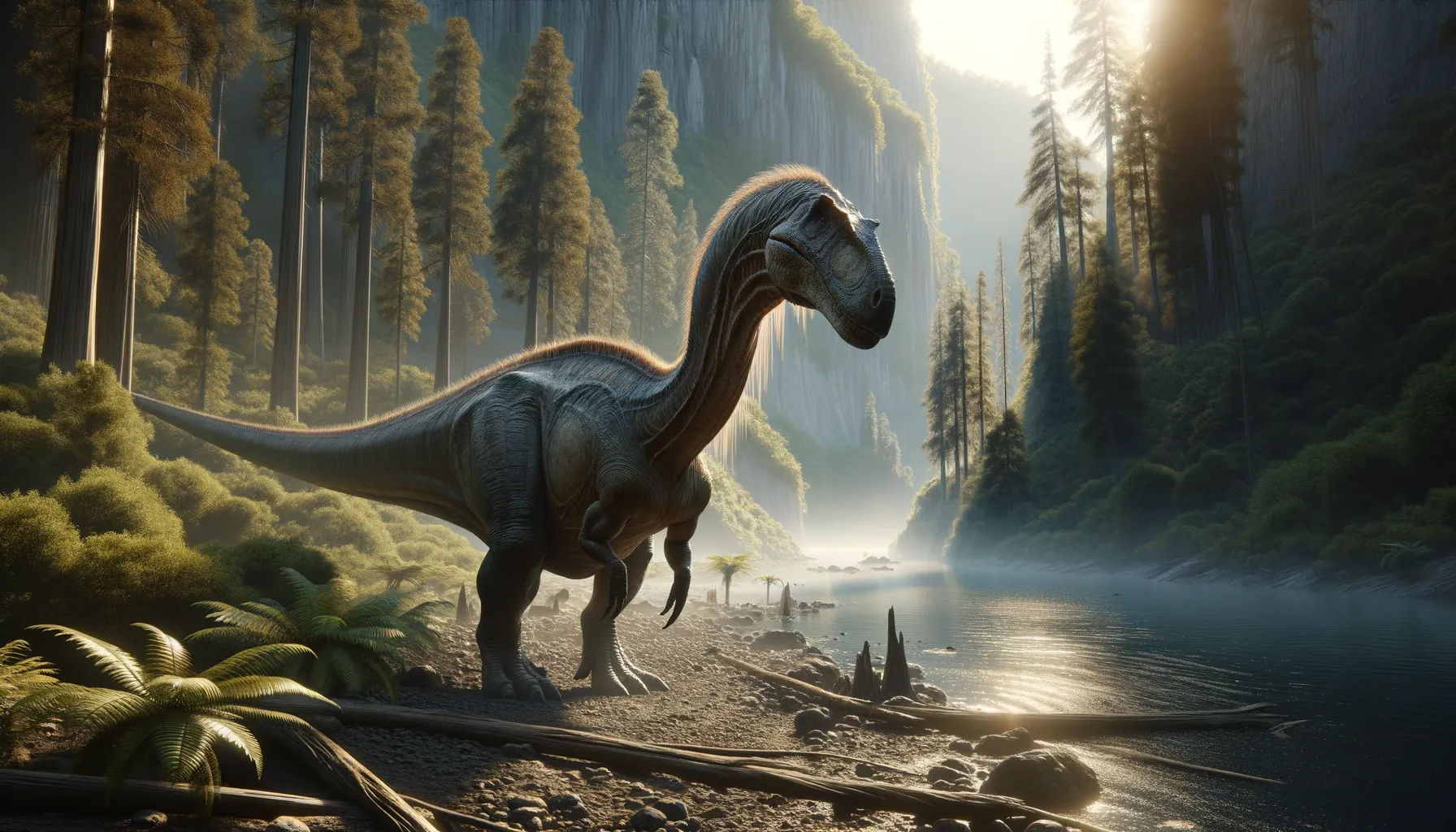
Microcoelus
Giant wanderer of ancient lands.
Period
Cretaceous
Length
Measured approximately 50-60 feet in length.
Height
Likely about 10 to 15 feet tall at the hips.
Weight
Estimated around several tons.
Microcoelus was a large dinosaur that lived during the Cretaceous period. It belonged to the group of sauropods, known for their long necks and tails. The discovery of its fossils in Argentina helped scientists understand more about the distribution of these giant creatures. Microcoelus shared the Earth with many other dinosaurs, thriving in diverse ecosystems that supported its herbivorous diet.
Diet
Microcoelus was a herbivore, feeding mainly on the abundant plant life of its time. With its long neck, it could reach foliage both high and low, providing access to various plants.
Hunting
Being a plant eater, Microcoelus did not hunt. Instead, it would roam the landscape in search of food, moving through large swathes of vegetation.
Environmental challenges
Microcoelus faced environmental challenges such as changing climates and volcanic activities. These factors could impact the availability of food and water sources. Additionally, competition with other herbivorous dinosaurs for resources might have posed a significant challenge. Predators like the large carnivorous dinosaurs of the era would also have been a constant threat, especially to the young and weak.
Speed
Likely slow-moving due to its size.
Lifespan
Estimated to live several decades.
First discovery
Fossils first identified in Argentina in the late 19th century.
Fun Facts
- Microcoelus was a small dinosaur that lived during the Late Jurassic period, around 150 million years ago.
- Its name means 'small hollow,' referring to the hollow cavities found in its vertebrae, which likely made it lighter and more agile.
- Microcoelus is believed to have been a herbivore, feeding on plants in its ancient ecosystem.
- Though not much is known about its size, scientists estimate that Microcoelus was relatively small compared to other sauropods.
- Fossils of Microcoelus have primarily been found in Argentina, a country known for its rich and diverse dinosaur history.
- Despite its diminutive size, Microcoelus was a member of the sauropods, the same group of dinosaurs that includes some of the largest land animals ever to exist.
Growth and Development
Microcoelus likely experienced rapid growth during the early stages of its life to minimize vulnerability to predators. As it grew, its massive size became its best defense against carnivores. Over time, it developed a fully mature set of features, including its distinct long neck and tail, which were crucial for its survival.
Habitat
Microcoelus inhabited lush environments with plenty of vegetation, such as forests and floodplains. These regions provided the necessary resources for sustaining its large body and herding behavior. The availability of water sources would have been essential for survival, especially during prolonged dry spells.
Interaction with other species
Microcoelus likely lived in groups for protection against predators and to efficiently exploit food resources. It interacted mostly with other herbivores, often competing for the same food sources. Predatory dinosaurs would have seen it as prey, especially younger individuals, necessitating constant vigilance.
Natural lifespan
Microcoelus had an estimated natural lifespan of several decades.
Reproduction
Microcoelus likely laid eggs in nests, with the young being relatively independent soon after hatching. Parental care might have been minimal, as young sauropods needed to grow quickly to avoid predation. Reproduction was key to maintaining population numbers in face of significant predatory pressures.
Social behaviour
Microcoelus likely exhibited social behavior, moving in groups for mutual protection and greater resource efficiency. Social structures might have been loose, with individuals coming together during migrations or food shortages. Communication could have involved vocalizations or body language.
Fossil locations
Fossils of Microcoelus have predominantly been found in Argentina. These locations provide insight into the spread and habitat preferences of large sauropods in South America. Ongoing discoveries continue to shed light on its distribution and environmental adaptations.
